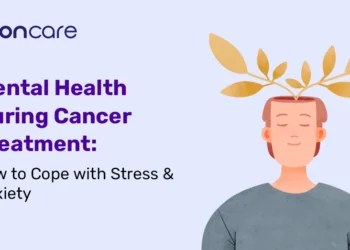In moments of crisis, the ability to provide immediate first aid can be a matter of life or death. First aid skills are essential for addressing a range of injuries, from minor wounds to life-threatening situations like cardiac arrest. While holding a first aid certification is a valuable asset, many individuals have questions regarding the duration of their certification and how to become certified in CPR and AED. This article delves into the importance of first aid, and the validity of first aid certifications, and provides a comprehensive guide on obtaining CPR/AED certification.
Table of Contents
The Significance of First Aid
First aid encompasses the prompt and basic care administered to individuals who are injured or suddenly fall ill. Administering first aid at the earliest possible moment can aid in better healing and prevent the exacerbation of injuries or illnesses. Let’s explore some compelling reasons for the importance of first aid:
Immediate Care: First aid offers immediate care, which can stabilize a patient’s condition until professional medical assistance arrives, reducing the risk of minor problems escalating into major issues. Various courses like defibrillator training courses are offered to teach first aid to people.
Life-Saving: First aid skills can be the deciding factor between life and death during emergencies, preserving circulation and oxygen flow to vital organs. This is particularly true when it comes to performing CPR and using an AED.
Injury Prevention: Swift and proper first aid for wounds and illnesses help prevent complications and long-term impairments.
Empowerment: The ability to provide first aid empowers individuals to take control of situations and assist others effectively.
Validity of First Aid Certification
Maintaining a first aid certification is an ongoing process, typically with a set expiration date for renewal. The validity of first aid certification can vary based on multiple factors, including the certifying organization and the type of certification, impacting how long does CPR certification last. Generally, first aid certifications are valid for two years.
To ensure that you possess the most up-to-date knowledge and skills, it is essential to renew your certification before it expires. Over time, first aid protocols, techniques, and best practices may evolve. Recertification not only keeps participants informed about the latest guidelines but also maintains their competence as first aid providers.
In some cases, employers, educational institutions, or organizations may require more frequent recertification, such as annual renewals, to ensure that individuals remain proficient first aid responders.
How to Obtain CPR and AED Certification
First aid training often includes certification in Cardiopulmonary Resuscitation (CPR) and Automated External Defibrillators (AED). CPR is a life-saving procedure that involves chest compressions and rescue breathing, while an AED is a portable device used to restore the heart’s normal rhythm in the event of cardiac arrest. Here’s a step-by-step guide on obtaining your CPR/AED certification:
Choose a Certification Provider: Begin by selecting a reputable organization or certification provider. Well-known organizations such as the American Heart Association (AHA), the American Red Cross, and the American Safety & Health Institute (ASHI) offer CPR/AED certification.
Select the Right Course: These organizations typically offer a range of CPR and AED classes tailored to different groups, including laypeople, childcare workers, and healthcare professionals. Choose the course that aligns with your responsibilities and requirements.
Enroll in a Course: You can enroll in your chosen course through the organization’s website or by contacting a nearby training facility.
Attend the Course: Depending on the options provided by your selected provider, attend the course either in person or through virtual sessions. In-person classes often include practical exercises to ensure your proficiency in CPR.
Complete the Course and Pass the Exam: Participate in the training, complete the course, and, if necessary, pass the written and practical exams.
Obtain Certification: Upon successful completion, you will receive your CPR/AED certification, typically valid for two years.
Renew Your Certification: To maintain the validity of your certification and stay current with CPR and AED guidelines, ensure you renew your certification before it expires. Recertification courses are available from various sources and are typically shorter, focusing on updating your knowledge and skills.
Certification in CPR/AED and first aid is a vital skill set that can make a significant difference in emergencies. While a first aid certification typically remains valid for two years, the exact duration may vary. It is crucial to renew your certification to ensure that you are always well-prepared to provide emergency care.
The process of becoming certified involves selecting a reputable CPR/AED certification provider, enrolling in the appropriate course, completing the program, and renewing your certification when necessary. By following these steps, you can acquire the knowledge and skills necessary to provide life-saving assistance in emergency scenarios and respond with confidence when crises arise.


 Home
Home









